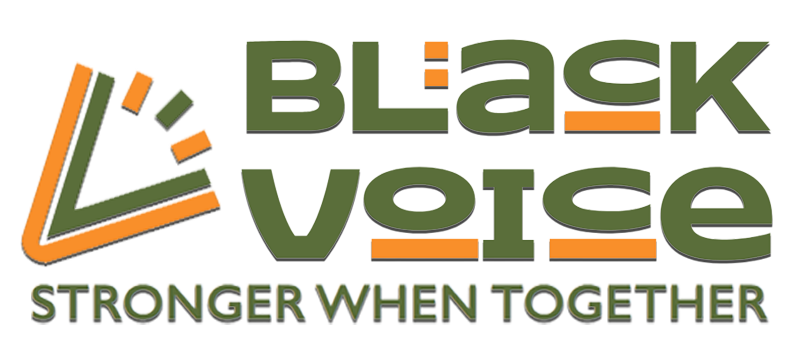By Yanet Mengistie
Posted on August 26, 2021
This article contains mentions of an Islamophobic attack.

The news media hits the public with a constant barrage of information. This makes it an entity that directly impacts how people view the world and others around them, from a young age. The news, although portraying itself to be ‘unbiased’ and ‘facts-driven,’ still has prejudices and biases. In particular, it holds biases in the portrayal of certain stories and in deciding what stories get portrayed and how they get portrayed. When concerning the BIPOC community, the headlines often either revolve around the ‘violence’ committed by BIPOC groups or remain silent about the successes and accomplishments of BIPOC peoples across Canada. This has caused Black Canadians to be either negatively or never represented by the mainstream news media such as CP24, CBC and CTV.
A skewed representation

The lack of proper BIPOC representation has damaging effects, not just in the journalistic field, but in society as a whole. Firstly, due to a lack of proper representation, Black individuals are portrayed in negative ways within Canadian society. Without Black decision-makers in the newsrooms, there is a lack of accountability that allows for ignorance or racism. This then leads to racial biases in news stories, which are shared as facts with the public at large. For example, when white men are spoken of in Canadian media, they are discussed with an air of innocence or ‘benefit of the doubt’. The media tries to humanize the actions of white men, no matter how vicious they may be. For example, when a white London, Ont. man struck and viciously killed a family of four in a hate crime fueled by anti-Muslim sentiments, Canadian news outlets such as CP24 circulated a picture of the man at a marathon. Displaying him as a successful athlete and speaking of him in relation to his community. Another outlet later stated that the attacker had “mental health needs,” as if mental illness could excuse his intentional actions. These outlets created a sympathetic lens through which to view the attacker’s violence. The biases made it appear as though this attacker was a victim, and did not viciously murder an entire family. This same sympathy or benefit of the doubt is not shown when a BIPOC person is accused of committing a crime.
White attackers frequently receive the assumption of innocence. A study at The Ohio State University confirms this. The study on crime and delinquency took 433 media transcripts and articles from 219 randomly selected mass shootings in the United States. Whites were 95 percent more likely to be called mentally ill than Black individuals. “Much of the media coverage of white shooters framed them as sympathetic characters who were suffering from extreme life circumstances. But black shooters were usually made to seem dangerous and as a menace to society. For example, when shooters were framed in the media as mentally ill, 78 percent of white attackers were described as being victims of society – as being under a lot of stress, for example – versus only 17 percent of black shooters.” Representation in newsrooms matters because without it the negative stereotype that people of BIPOC descent are dangerous continues to run rampant in society. Without fair representation, other perspectives cannot be seen and bias in the media cannot be caught before it’s too late.

The media personalities in this article are pioneers, as they are not playing by the rules of traditional newsroom media and creating their own narratives.
Nadia Stewart
Nadia Stewart has a plethora of accomplishments on her resume. Stewart started her career as a reporter, anchor, and talk show host for Rogers TV Peel. She then worked as a reporter for CBC in St. John’s, Calgary, and Edmonton. After being called a racial slur in 2016, Stewart was tired of being the only Black person in her field and decided to take matters into her own hands. She emailed the Canadian Association of Black Journalists (CABJ) and took on the task of revitalizing the organization, which at the time was largely stagnant. Stewart aided in encouraging Black journalists to reach out to the CABJ with issues of racism in the workplace or when stories pertaining to Black lives were being rejected for unacceptable reasons. This created not just a support system within the field but allowed for the CABJ to advocate for Black Journalists and their stories. Stewart is now the Executive Director of the CABJ and works diligently so that Black Journalists don’t feel isolated in an industry where they can sometimes be alone.
Jode-Leigh Nembhard
Toned is an online and print publication owned and founded by Jode-Leigh Nembhard. Toned is independent and therefore outside of the mainstream print and magazine landscape, giving Nembhard the power to create meaningful stories without the need for industry approval. Toned specifically focuses on recognizing and applauding Black Canadians, as it wants to be a space that gives a platform to stories, issues and people who have been left out of the media space. The magazine seeks to create a community in which storytelling allows writers and readers to share and learn about diverse experiences. Toned delves into issues in pop culture, issues that impact the Black community, as well as politics. Toned has something for everyone. Writers who feel they have an interesting topic to touch on can check out Toned and pitch their ideas!
Brandon Gonez
Brandon Gonez is someone Torontonians are familiar with. Getting his big break at CP24, many may remember Gonez’s infamous line that went viral, stating “you’re doing too much” to a passer-by seeking to disrupt his news segment. However, before that moment, Gonez had a long career in the Canadian news industry. In 2014, Gonez started as a reporter in the Northern B.C. area, covering stories related to Indigenous issues. Gonez then started to be viewed on a national level, working next at Canada’s national morning show, Your Morning. In 2019, Gonez began working at CP24 where he not only had his infamous moment, but also became a social media staple due to his comical personality, unwavering ability to be himself, one-liners and use of Jamaican Patois. He became iconic for remarks such as “making that melanin pop,” “this is not Only Fans” and “on your headtop.”
In 2020, Gonez left CP24 and decided to bet on himself, creating his own media company, Gonez Media Inc. A part of this company is Gonez’s new weekly show titled The Brandon Gonez Show. Airing every Sunday at 6 p.m. on Youtube, the show tackles recent issues affecting Canadians and is unafraid to delve into unreported stories regarding the BIPOC community in Canada. The show has been very successful as Gonez has had interviews with the Prime Minister of Canada Justin Trudeau, NDP leader Jagmeet Singh and Chief Public Health Officer of Canada Dr. Theresa Tam. The Brandon Gonez Show is most likely the first step in Gonez’s Canadian media empire, as he hopes to develop opportunities for other underrepresented BIPOC individuals in Canada to share their stories. Gonez is someone who will be influential in how the Canadian news landscape changes in the next few years.
Camille Dundas
Camille Dundas is also changing the Canadian media landscape. Dundas is the co-founder and Editor-in-Chief of Canada’s largest Black online magazine, ByBlacks.com. Beginning in 2013, ByBlacks.com was started to highlight the achievements of Black Canadians, many of whom were having their accomplishments go unnoticed in the media. The site also has over 100 contributing writers highlighting issues and trending topics that concern Black Canadians. Furthermore, the magazine also has a Black business directory where Canadians can support local Black business owners. Prime Minister Justin Trudeau has even acknowledged the importance of the magazine, sending a personally signed certificate of recognition to congratulate the magazine on its fifth anniversary.
Dundas herself is also changing Canada in other ways, as she heads to large companies and tries to break down doors for other Black Canadians. Dundas started her career as a journalist in national television news, working in the space for nearly 10 years. She then decided to shift fields into the tech industry and to become a consultant at Hootsuite. Dundas then began her advocacy as a Diversity Equity and Inclusion (DEI) consultant, working with the Government of Canada, KPMG International, TD Canada Trust and many other large Canadian companies to assist companies in understanding the importance of not just gender diversity, but racial diversity. Dundas is a changemaker both in Canadian media and the larger corporate world.
These four media individuals are just a few representations of what the Canadian news media landscape should look like in the future. Hopefully, while changing this space, these four will simultaneously inspire those who look like them to tackle the field by being unapologetically themselves.
Yanet Mengistie is an experienced Writer, Researcher and Creative who is ready to hit the ground running with Black Voice. Driven by having previously worked as a Content Writer for a company that sought to uplift small businesses in Northern Canada, she takes joy in using her writing to uplift small or marginalized voices. As a Writer with Black Voice, her goal is to combine this passion for small businesses with this publication's mission of empowering Black individuals across Canada. Yanet is committed to ending the marginalization of Black Canadian perspectives and opinions. She hopes to bring Black excellence, concerns or hot topics to the forefront through her work with Black Voice.

